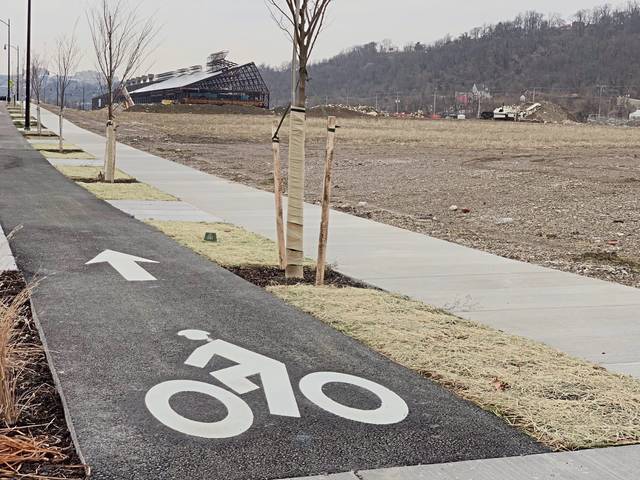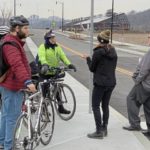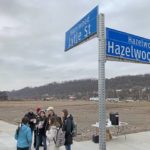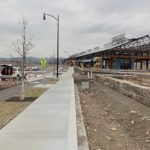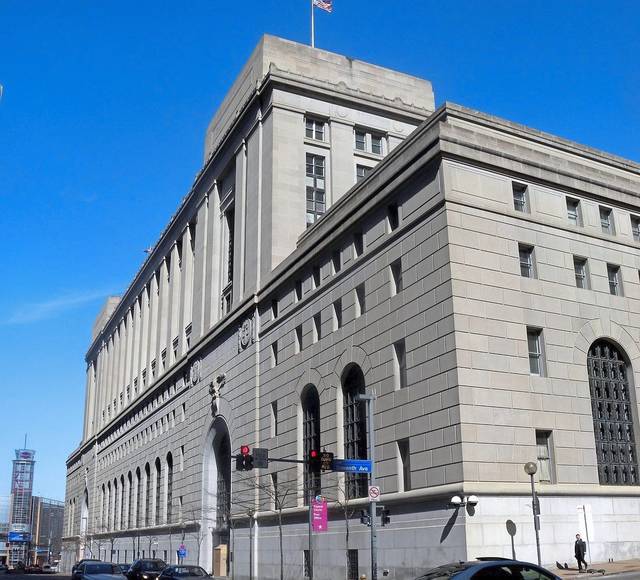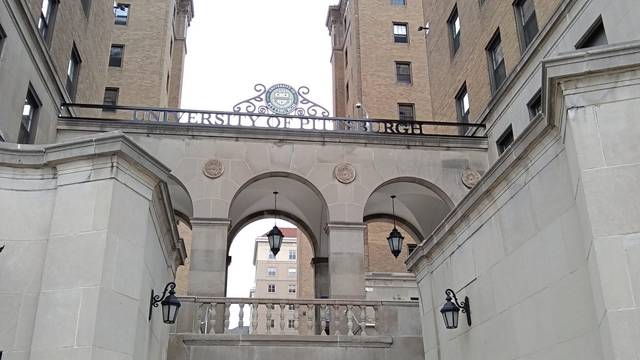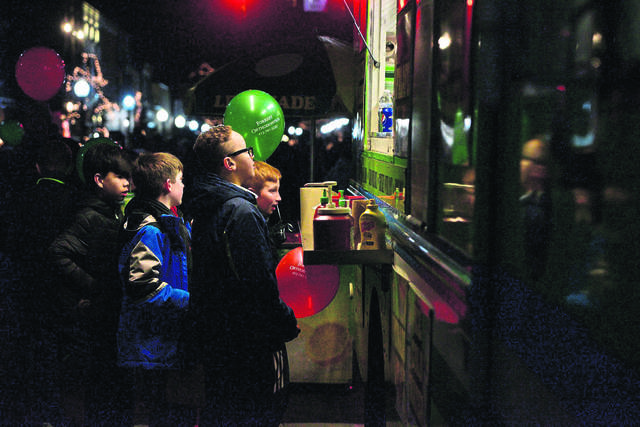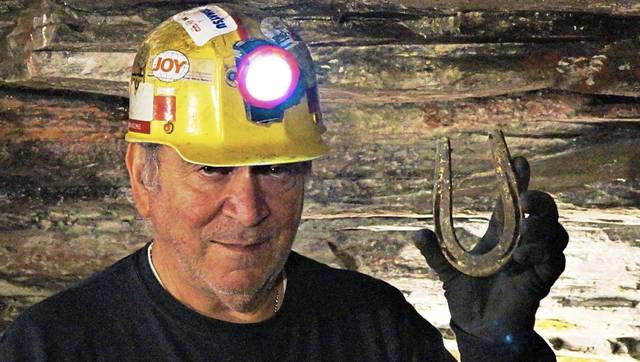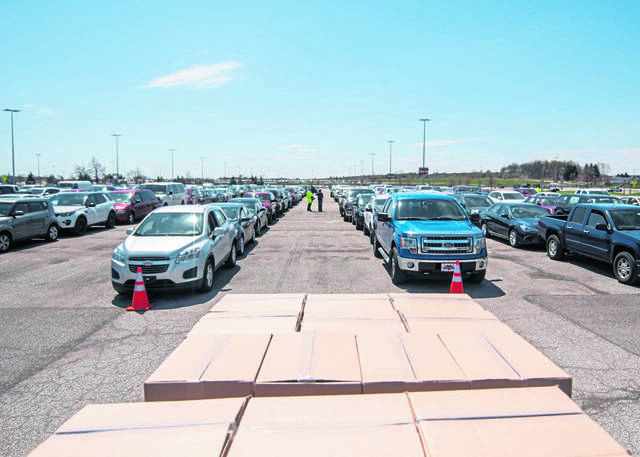Three newly paved public streets, freshly painted bike lanes and innovative landscaping features are among the latest visible signs of activity taking shape at Hazelwood Green, a 178-acre development along the Monongahela River that’s been in the works for nearly two decades.
The infrastructure improvements, which took two years to design and one to build out, signal another step toward attracting investments and tenants to the brownfield owned by a consortium of foundation leaders under the group Almono LP. The foundations funded the project via loans to Almono Group, which also is getting help in the form of state tax credits.
“This nearly $10 million infrastructure improvement that will be now available for the public use is all part of the overall economic development strategy for this site that basically was put together in 2002, when the (Almono) partners first bought the site and saw a future for it,” said Rebecca Flora, president of ReMake Group and the project’s manager for the past three years.
On Thursday afternoon, Flora joined city officials, nonprofit leaders and a couple dozen residents who live nearby to celebrate the grand opening of the streets to the public over hot chocolate and cookies.
“You have a meeting and you make all these nice plans, but then nothing happens,” said Fran Bertonaschi, 69, a 31-year Hazelwood resident who started attending public sessions regarding plans for the site in the early 2000s. “So it gets people’s hopes up, and then after a while, you start thinking, ‘Oh well, nothing’s ever going to happen. So it’s good to see things finally taking root, buildings coming up and streets opening up.”
Three new streets open to public
Sleek street lights, staked trees and floating bus islands dot the new Lytle Street, which intersects with Hazelwood Avenue and takes drivers, bicyclists or pedestrians on protected sidewalks and bike planes toward Mill 19, the first hub of commercial activity at the brownfield. Protected bike lanes and sidewalks are wedged between banks of greenery aimed to recycle and reduce the amount of stormwater that makes its way into pipelines.
Eventually, the new stretch of Lytle Street will connect to the existing Lytle Street, traversing nearby streets lined with houses. The connection will be completed once Uber vacates its temporarily leased space along Hazelwood Avenue that’s being used for a self-driving car test track.
“That’s always been the plan from the beginning, to integrate this into the neighborhood,” Bertonaschi said. “We’re seeing more of that now, and they’re using the same names as the existing street names.”
Two other new roads include Beehive and Eliza streets, also designed to prioritize pedestrian and bicyclist safety and limit how fast vehicles can travel through the likes of raised, textured crosswalks, meandering streets with slight turns, and alternated on-street parking spaces.
Beehive Street connects to Lytle and Blair streets, and Eliza Street will link to a planned public plaza set to open next year.
“The street names also establish linkages to the site’s heritage and the surrounding neighborhood, with Lytle Street a continuation of the existing Lytle Street in Hazelwood’s Scotch Bottom, Beehive Street named for the world’s largest concentration of beehive coke ovens occupying the site at the turn of the 20th century, and Eliza Street named after the Eliza Furnace.”
Two permanent bike and pedestrian counters were installed to track traffic and inform future investments.
Scott Bricker, executive director of BikePGH, credited the project with setting “a new standard for how bicycle and pedestrian infrastructure should be built in the city.”
Karina Ricks, director of the city’s Department of Mobility and Infrastructure, said the newly unveiled streets “will serve as a model for future development projects.”
KU Resources, Mele & Mele & Sons and Oxford Development contributed to the project.
8 million square feet to fill over 20 years
Formerly known as Almono, Hazelwood Green’s broader 178-acre site is owned by Almono LP, which includes the Richard King Mellon and Benedum foundations and The Heinz Endowments, which snapped up the site in an effort to preserve the future of the last remaining large track of riverfront property in Pittsburgh.
They’ve envisioned a transformation from a brownfield into a green, high-tech center with space for housing, offices and recreation.
“The foundations that formed the Almono partnership decided that was just too important to risk it not being something special some day,” Flora said.
Work on the site had effectively stalled for about 10 years until 2012, when serious plans and preparation ramped up, according to Flora.
“Really it’s just been within the last couple of years that we’ve started to have the site ready for development,” Flora said.
She credited the foundations from thwarting less-desirable uses of the land — another coke plant was discussed at one point — and being “able and willing to sit on it until the time was right in the market.”
“And the time is right now,” Flora said. “We absolutely do have market interest. It’s real. It’s starting to happen now, and we’re totally ready. We’re shovel-ready, as they say, for new development here.”
In December, Aptiv self-driving car company announced its move into Hazelwood Green’s building dubbed Mill 19, which is being retrofitted for offices and research and development companies. Carnegie Mellon University’s Advanced Robotics Manufacturing Institute became its first anchor tenant, followed by Catalyst Connection, a nonprofit that provides consulting and training services to small manufacturers.
The Regional Industrial Development Corp. of Southwestern Pennsylvania owns 12.6 acres of the site, which includes the Mill 19 building.
“The Mill 19 building is just the beginning,” Flora said.
The primary goal is to develop out 8 million square feet of occupied space over the next 20 years, Flora said.
As a resident, Bertonaschi said he wants to make sure that project leaders continue to seek local input and limit potential rent spikes or other affordable housing issues that could spring up along the way.
“We’re just trying to make sure that the people who live here now will be able to stay here if they want to,” he said.
Last April, the sprawling property opened to the public for the first time in more than 100 years with Blair Street, a $21 million thoroughfare formerly known as Signature Boulevard that stretches 1.2 miles along the river from Hazelwood to Second avenues.
A 1.9-mile dedicated bicycle route known as Hazelwood Trail parallels Blair Street and provides a direct connection from Hazelwood to Eliza Furnace, Three Rivers Heritage and Great Allegheny Passage trails. The Port Authority of Allegheny County has agreed to route its 57 Hazelwood bus line through the property.
“We’re seeing a lot of businesses and employees who want to be in an urban environment, so we’ve really designed this entire site to be a very dense, urban-designed environment — a place where people actually want to walk and actually be part of what’s going on around them,” Flora said. “From an economic development standpoint, this is the future. This is the type of development people want to be part of, to be able to walk into a neighborhood, to have amenities, to be able to live close to where they work.”
Correction: Karina Ricks, director of the Pittsburgh’s Department of Mobility and Infrastructure, was incorrectly identified in an earlier version of this story. The story has been updated.




